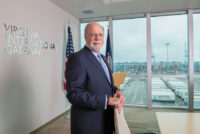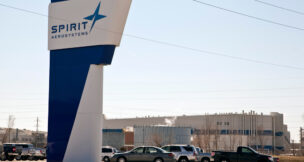JOHN F. REINHART
FORMER CEO AND EXECUTIVE DIRECTOR VIRGINIA PORT AUTHORITY VIRGINIA BEACH
Trump suggests US will buy Argentine beef to bring down prices for American consumers
President Donald Trump says the United States could buy Argentine beef in an attempt to bring down prices for American consumers.
IMF raises U.S., global growth outlook despite tariffs
WASHINGTON (AP) — The U.S. and global economies will grow a bit more this year than previously forecast as the Trump administration’s tariffs have so far proved less disruptive than expected, the International Monetary Fund said Tuesday, though the full impact of those policies is still emerging. The United States’ economy will expand 2% in 2025, the […]
Hampton Roads seeks opportunities amid federal policy changes
Hampton Roads leaders warn of risks from tariffs, defense cuts and energy policy while seeing growth in military tech and industry.
Trump’s trade battle with China puts soybean farmers in peril
China stops buying U.S. soybeans, leaving Virginia farmers with fewer export markets. Simultaneously, farmers face rising expenses.
Port of Virginia sees 8.7% drop in cargo traffic
The Port of Virginia has seen a decline in shipping container volumes in recent months, amid President Trump's trade war.
Trump ends duty-free rule for imports under $800
Imports under $800 no longer enter duty-free after Trump order, forcing new taxes on small parcels and disrupting global shipping services.
US will get a 15% cut of Nvidia and AMD chip sales to China under a new, unusual agreement
Nvidia and AMD have agreed to share 15% of their revenues from chip sales to China with the U.S. government, as part of a deal to secure export licenses for the semiconductors.
Trump speaks with Xi amid stalled talks between the US and China over tariffs
U.S. President Donald Trump and Chinese leader Xi Jinping spoke amid stalled tariff negotiations that have roiled global trade.
Trump tells US steelworkers he’s going to double tariffs on foreign steel from 25% to 50%
WEST MIFFLIN, Pa. (AP) — President Donald Trump said Friday that he’s doubling the tariff rate on steel to 50%, a dramatic increase that could further push up prices for a metal used to make housing, autos and other goods. Trump spoke at U.S. Steel’s Mon Valley Works–Irvin Plant in West Mifflin, Pennsylvania, near Pittsburgh […]
Appeals court allows Trump to continue collecting tariffs under an emergency powers law for now
A federal appeals court is allowing President Donald Trump to continue collecting tariffs under an emergency powers law for now.
US trade deficit hits record high as businesses, consumers try to get ahead of Trump tariffs
U.S. trade deficit surged to a record $140.5B in March as businesses raced to import goods ahead of sweeping Trump tariffs, dragging on GDP growth.























